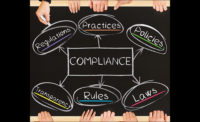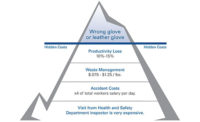Safety training is important to master. We’ve all been through a training session that left us asking more questions about why we were there than about the topic itself. This article gives you ideas about what’s really important when it comes to training within your organization. It also helps you to answer the question, “Are my workers prepared with the information needed to keep them safe?”
Throughout my career in safety, I’ve come across many instances where training is incorrectly used as a solution. This is not an article on safety culture, but it’s important to understand the basics for how culture applies.
First, training is not the corrective action or solution for every observed at-risk behavior or incident. It’s most effective where there is an identified skill deficiency. Take the time to ask the right questions even if it delays the completion of an investigation because that extra interview or conversation is needed. Training someone on something they already knew but chose to do incorrectly, or did because they were told to do it alternative to the procedure by a manager has little to no value.
Need-to-know information
Choosing the right training for your organization takes planning and a familiarity of what the job responsibilities of the employees are. A comprehensive training program starts with an orientation on their first day of work. This typically covers all of the minimum requirements an employee should know about their job from a safety and operational perspective. Some examples of need-to-know information to be included in an orientation are provided by topic below:
1. Incident Management
a. What are the expectations (who/how/by when) of me as an employee for reporting near misses and incidents?
b. After reporting an injury or loss, what should I do next?
c. If I’m injured, where should I go for treatment and what benefits are available for me?
2. Fitness for Duty
a. Am I physically capable to do the job that’s being asked of me?
b. Am I on any medications that would affect my ability to perform my job safely?
3. AHA/JHA Policy
a. What does the company generally expect for the use of Job Hazard Analyses?
b. When are they reviewed?
c. Where can I find them?
4. Stop Work Authority
a. What is the company position on stop work authority?
b. If I see a situation that is unsafe, what are the immediate steps I should take?
Job-specific training
Once the basics of the orientation have been taken care of, a job-specific approach to training is next. Assuming required job skills have been acquired, this is where the supervisor looks specifically at the tasks their employees are required to perform and provides them with the information needed to keep them safe.
An example of this might be a machine operator. The employee becomes familiar with how the equipment works via a walk around and identifying key safety items such as required machine guarding, body positioning, emergency stop locations, lockout procedures to control hazardous energy and preoperational startup checklists.
Compliance training
Some jobs may require highly specialized training not only for safety reasons, but for compliance as well. Examples of this include, but are not limited to, confined space entry, forklifts, PPE hazard selection and lockout. In these types of training, the employee typically completes a theoretical portion as well as some type of practical approach. For compliance-related training, OSHA has a useful document called “Training Requirements in OSHA Standards” which is also known as OSHA 2254. (OSHA, 2015)
Remember, it makes the most sense to have employees attend training sessions that apply to them specifically, as opposed to having everyone sit through all types of training. Also, retraining is often required if a skill deficiency is observed or refresher training is required at specified intervals. It’s a good idea to consider implementing a competency verification quiz at the end of trainings to determine the level of retention an attendee has.
Questions to ask when planning training
Once you’ve determined what training is needed as part of your program, give thought to content and delivery. The duration, venue, delivery style, program, attendees and supporting materials will all need to be figured out. Here are a few questions you should consider when planning a training event:
1. Who does this training apply to and how many employees will need to attend?
2. Where and at what time should we have this training? (Note that after a shift is not a good idea.)
3. Is the temperature adequate? (Size of the room, number of attendees and geographical location are all factors)
4. Will refreshments be needed?
5. When should the breaks be held? (Should not be spaced longer than 60-90 minutes)
6. Are AV equipment and an Internet connection required?
7. Is there an area to conduct practical assessments?
8. How will we manage attendance records, handouts and administrative duties?
9. What should the room layout look like to promote neutrality for the attendees?
10. From a content perspective, how do we want to lay out the material and are we familiar enough to be viewed as credible presenters?
Increasing employee interest
People often like visuals and things they can relate to. A short video clip, a photo, something they can place their hands on, breaking up into a group setting, and even gamification can bring great levels of interest to a topic.
Present the material in a way that’s organized and easily understood. It has to flow well to be retained by the attendee because the goal is that they leave the meeting with more than they had when they came in -- and they can apply it when they get back to their work setting. Another document which might be helpful related to training development is ANSI/ ASSE Z490.1. (ANSI, 2016) This specifically covers accepted practices in EHS training. A good practice is to solicit feedback from the attendees to get an idea of the perception they have of your delivery, content, facilities and other attributes of the session.
Training is a core component of any safety, health and environmental program and it is incumbent that you have qualified employees, validate their skillset and train them on safe work procedures and expectations. Effective training programs require an investment in time, creativity, finances and ongoing support.
References
American National Standards Institute. (2016). Criteria for Accepted Practices in Safety, Health, & Environmental Training: Retrieved from http://webstore.ansi.org/RecordDetail.aspx?sku=ANSI%2FASSE+Z490.1-2016
Occupational Safety and Health Administration. (2015). Training Requirements in OSHA Standards: Retrieved from https://www.osha.gov/Publications/osha2254.pdf



